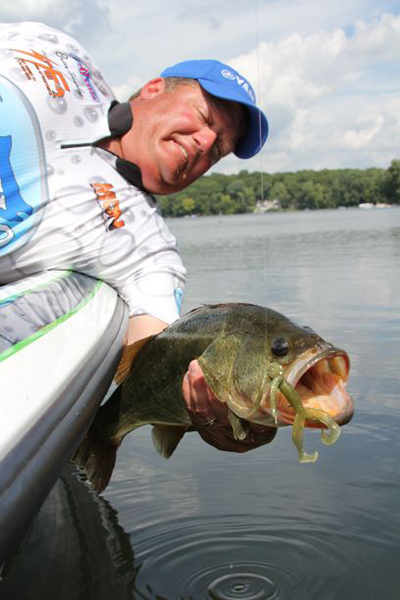- Details
p>Garmin Electronics will conduct a seminar on how to use modern day fish finders Tuesday night from 6 to 8 at the Meadow Valley Golf Course.
The program is provided by Tackle Shack in Middlebury.
Garmin representatives will explain how to read today’s computerized graphs and interpret the signals the units are producing. They also will explain the new Panoptix Livescope feature and how it reveals fish out ahead of the boat.
For more information, call the Tackle Shack at 574-825-0802.
- Details
IDNR Report
The Indiana DNR Division of Law Enforcement is looking to fill Indiana Conservation Officer (ICO) positions across the state with highly motivated, outdoor-centered individuals.
Anyone interested in a career as an ICO should first to go to www.dnr.IN.gov/lawenfor and complete the Pre-screening test. Completion of this test by midnight Feb. 4, 2019 is required to be considered for the 2019 hiring process, which starts in late February 2019.
- Details
By Louie Stout
 Shipshewana Show Features Hunting/Fishing Seminars The eighth annual Michiana Outdoors & Sportsman Show will be held at the Michiana Events Center (MEC) in Shipshewana next weekend.
Shipshewana Show Features Hunting/Fishing Seminars The eighth annual Michiana Outdoors & Sportsman Show will be held at the Michiana Events Center (MEC) in Shipshewana next weekend.
The show runs Friday, Jan. 18 from 11 a.m. to 8 p.m. Saturday, Jan. 19 from 8-5.
The program will have a heavy outdoors flavor with seminars on open water panfishing, ice fishing and bass fishing (Brian Hensley), trapping (Mathew Badger), deer hunting (Fred Abbas), Elk hunting (Alan Carter) and whitetail deer land management (Don Higgins).
In addition, there will be demonstrations by the Dock Dogs, experts to score antlers, and bow shooting exhibits both days.
Vendors include those displaying hunting and fishing gear, hunting and fishing charters, boat dealers, taxidermists and more. Drawings will be held for deer hunts and charter fishing packages.
Admission is $10 for adults and free to children 12 and under.
For more information and seminar schedule, visit www.michianaevents.com.
- Details
IDNR Report
A two-year investigation of a Milford, Ind. man by Indiana Conservation Officers for poaching resulted in the recent arrest of Terry Howard, 42.
Howard faces charges for Possession of a Firearm by a Serious Violent Felon, Resisting Law Enforcement, and Perjury. Howard will also face Misdemeanor charges of Theft, Illegal Possession of Whitetail Deer, and Taking of Whitetail Deer by Artificial Light.
On Jan. 2, Kosciusko County Sheriffís Office deputies were dispatched to Howardís residence regarding Howard violating a protective order. Conservation Officers, Kosciusko County Deputies, Indiana State Police, Milford Police, and Syracuse Police responded to the area. They found Howard driving on 900 N near Old State Road 15. Howard attempted to flee by driving his truck across a field, but officerseffectively deployed stop sticks.
While Howard was being held at the Kosciusko County Jail, Conservation Officers executed search warrants related to poaching. The warrants yielded evidence dating beyond recent years. Nearly 20 sets of deer antlers, multiple firearms, and miscellaneous drug evidence were found.
Conservation Officers also deployed a K-9 unit to track the area where Howard had driven. The K-9 unit located a 12-gauge shotgun with an attached scope. The shotgun had been identified by Conservation Officers as being used by Howard while poaching deer.
On Jan. 3, Conservation Officers executed a final search warrant at the address of Alfred Howard, 41, of Cromwell. Conservation Officers located a stolen handgun and the skull of what appeared to be a poached antlered deer. Kosciusko County Sheriff Department detectives identified the handgun as a missing piece of evidence from a large theft case that had occurred recently in Kosciusko County.
Approximately two years ago, Conservation Officers were notified of possible illegal hunting activity that had been occurring in and around Kosciusko County. Upon initial investigation, it was determined that a primary suspect, later determined to be Terry Howard, had been engaging in illegal taking of deer at night throughout an area that covered two counties. Conservation Officers had reason to believe that Howard had been involved with the illegal taking of several large antlered deer as early as 2016.
In 2018, Conservation Officers again were alerted to illegal hunting practices matching the patterns identified by the 2016 investigation of Howard. During 2018, Conservation Officers were able to closely monitor the movements and poaching activities of Howard, which culminated in the application and authorization of the search warrants.
Indiana Conservation Officers thank the Kosciusko County Prosecutorís Office, Kosciusko County Sheriffís Office, Indiana State Police, Syracuse Police Department, and Milford Police Department for assisting on this investigation.
The above information was discovered as a result of a law enforcement investigation. The Indiana Department of Natural Resources, Law Enforcement Division, acknowledge that the charged defendant is presumed innocent unless proven guilty beyond a reasonable doubt in a court of law.
- Details
IDNR Report
The Indiana DNR's reserved-hunt applications can now be made through the Division of Fish & Wildlife's online-services application at: https://secure.in.gov/apps/dnr/portal/#/home.
You can use the same website to purchase hunting, fishing, and trapping licenses, use the Check-in Game system, get a HIP Registration number, make a donation, or purchase a gift certificate.


